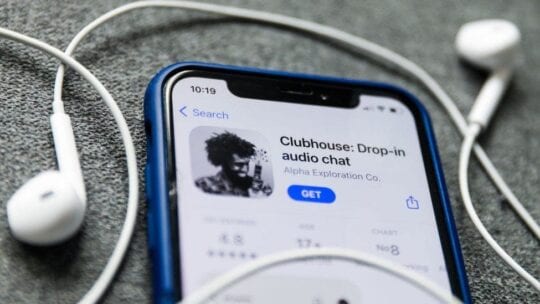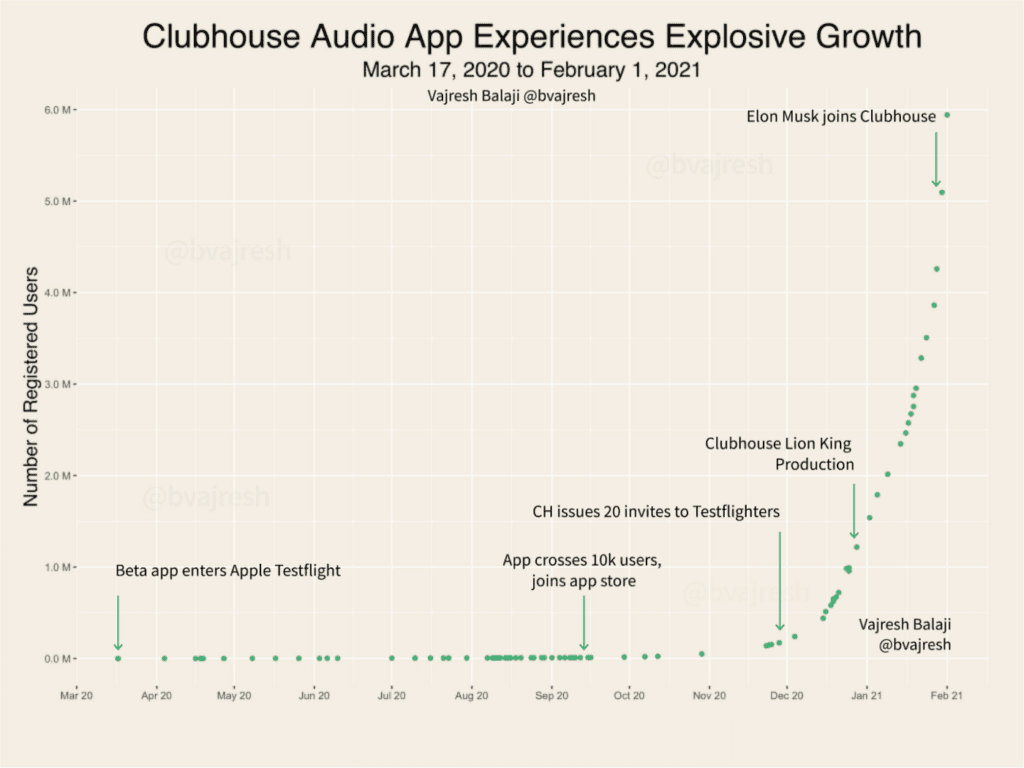
There is a lot of hype about the app Clubhouse. Elon Musk, Mark Zuckerburg and other celebrities are feeding its invite-only exclusivity. The result is exponential growth, to more than 6 million users, as of Feb 1, 2021.
In his market forecast for social audio, Jeremiah Owyang mused that Clubhouse is the Goldilocks medium of the 2020s: "Text is not enough, and video is too much; social audio is just right."
He adds, "Clubhouse represents the opportunity for social connection and empathy without the downsides of video."
Clubhouse is not alone in the social audio sector; other players include Discord, Yak, and LockerRoom. It is, however, the one app that has people talking.
The premise is simple: users can enter into different rooms to listen, or participate in a conversation. They're able to see who else is there and also view profiles.
Some compare it to Twitter: however, in Clubhouse you listen to live conversations in the background. It's interactive and unrecorded. Because it is a real-time conversation, content on Clubhouse is sticky, engaging, and amplified by the human voice's pathos.
Twitter is widely testing Twitter Spaces, a potential competitor to Clubhouse. In addition, Facebook has something in the works.
Brands Entering the Clubhouse?
Very quietly, brands are investigating Clubhouse. At least three major retail brands are testing the waters with very short, 30- 45-minute general Clubhouse rooms. They're looking at reaction and engagement.
"Clubhouse provides access and authenticity that feels unprecedented and is reinventing the constructs of how we communicate using social as a utility," said Matt Barash, SVP, global publishing & platform partnerships at Zeotap. "Brands can be interactive entertainment, and it's our duty on Clubhouse to provide democratized access to the show."
There is also Clubhouse's 'serendipity factor.' People find themselves listening to dialogues between reporters, celebrities, scientists, artists. For example, recently I was in a small Clubhouse room with Zendaya and director Sam Levinson as they chatted about their new Netflix movie, premiering that night.
CTA for Brand Communicators
What can brand managers be doing right now?
- Score invites and familiarize yourself with the app. There are many online tutorials and Clubhouse rooms within Clubhouse that cover everything from Clubhouse tips and tricks to creating a profile.
- Take the lead. Make the app known to IT/legal and HR partners, departments and companies you represent. Brand managers can help develop policy and procedures around the app and make senior leadership aware of opportunities and risks.
- Monitor. Brand managers and communicators can start social listening and monitoring in Clubhouse rooms for their teams and clients.
Last, since Clubhouse is in beta, new tools, functionalities and analytics could be just around the corner. Some predictions for features that could benefit brands include sponsored rooms. The content brands can place in sponsored rooms is endless: product launches, earnings calls, employee experiences, town halls, customer service issues, brand acts, social good/CSR programs.
Moreover, Clubhouse will force companies to reinvestigate/reinvigorate brand ambassador and evangelist training and programs. "Clubhouse presents a huge opportunity for brands. If your employees are engaged, informed and feel valued, they can be powerful, trusted advocates in these online spaces," said Robyn Hannah, senior director of global communications for Dynamic Signal.
In the end, brand is about storytelling. And what better way to tell a story than with your voice? That said, fellow early-adopting brand managers, step one is to score an invite.
James Nickerson is a lead instructor in digital marketing for General Assembly. Follow him: @NickInSFO

